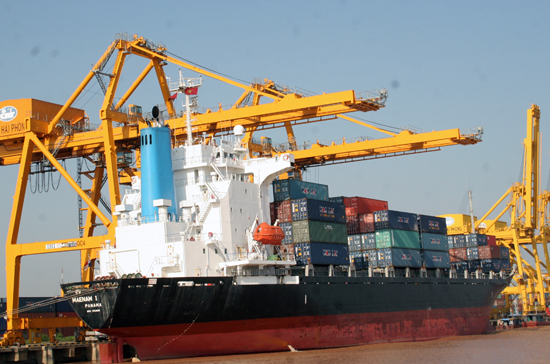Vietnam Trade, Exports and Imports

As per the General Statistics Office (GSO) of Vietnam, the 2009 export turnovers were estimated to be US$56.6 billion, reflecting a drop of 9.7% from 2008. The import turnovers of 2009 were anticipated to be US$68.8 billion, which showed a drop by 14.7% from 2008. Although the decreased import turnovers were higher than export turnovers, the 2009 trade deficits was estimated to be US$12.2 billion, reduced by 32.1% reported in 2008 and equaling 21.6% of the total export turnovers of 2009.
FDI companies contributed 36% of the total imports in 2009, while the rest 64% was made up by the local companies. The total export results of the same year read 47% earnings by FDI companies (excluding crude oil) and 53% by local companies.
Vietnam Trade: Exports and Imports
Vietnam's main exports include:
-
crude oil
-
textiles and garment
-
rice
-
coffee
-
rubber
-
coal
-
aquaculture
-
processed forest products
Although agricultural produce crowds the export item list, this will soon transform as Vietnam increases its industrial base. The 2009 report states 11% earnings on crude oil, 7% on aquatic products, 7% footwear, 5% electronic equipment, 5% jewelry, 5% rice, 4% wooden products, 4% machinery, 3% coffee, 2% anthracite and 2% rubber.
Vietnam’s key import commodities include:
-
petroleum products
-
steel
-
fertilizer
-
electronics
-
machinery and equipment
The year 2009 saw Vietnam import rubber worth USD 90 million, US$400 million plastics, US$440 million machineries, USD 390 million electronic goods and USD 350 million steel, among others.
Vietnam Trade Partners
Currently, Vietnam's major trading partners include Japan, Singapore, Hong Kong, Taiwan, Korea and the European Union. Its trade with the Asian economies constitutes approximately 80 percent of its total trade. Before 1990, Vietnam's chief trading partners included socialist countries, especially the Soviet Union.
Major markets of Vietnam in the export business 2007 were:
-
Petrochemicals
-
Construction Industry
-
Cement Industry
-
Power Generation/Electricity
-
Food and beverage
-
Paper and Pulp
-
Plastic and Rubber
ASEAN
The Association of Southeast Asian Nations (ASEAN) includes countries, such as Brunei, Cambodia, Indonesia, Laos, Malaysia, Myanmar, Philippines, Singapore, Thailand and Vietnam. Vietnam had taken on the role of President of the ASEAN, beginning January 01, 2010. The country aims to utilize its term as the president to accelerate development of the ASEAN Community, strengthen regional solidarity and cooperation, and enhance Vietnam’s image at the international front.
Source: http://www.economywatch.com/




